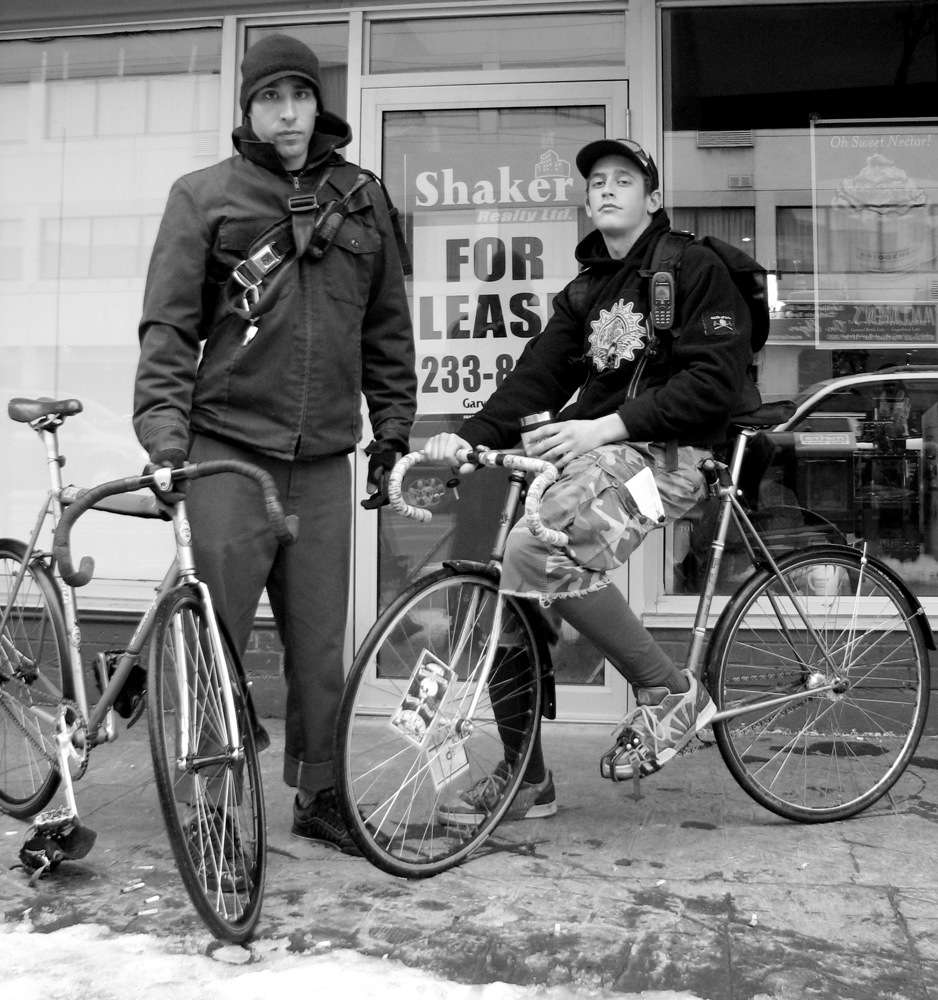OTTAWA — Feeling trapped inside by the cold weather? Are you taking a break from cycling until the spring thaw?
Winter cycling has an allure all its own, but to be sure it also has its challenges. I recently spent some time in Ontario and saw how truly dedicated cyclists make their way through the streets of Canada’s frozen capital.
So, for some advice on cycling through the winter, I turn to the hardest working professional cyclists in Ottawa: the bike messengers. Like year round bike commuters, couriers have no choice when to ride. They ride every day they’re working, and most of them are working every day.
The capital city’s couriers offer four nuggets of advice to wintertime cyclists.
First, don’t fall for thinking that knobby tires make good winter tires.
A lot of people think, “because of wintery slush on the roads that knobby tires are in order,” says Crazy Dave, a long time Ottawa messenger. But knobbies won’t help, he says. “The snow packs in between the knobs and actually makes it worse.” Your traditional narrow road tires, or “slicks,” actually cut through the snow and find pavement to grip.
Sure enough, as I glance around at the couriers’ bikes congregating at the World Exchange Plaza, almost all of them are bear the slick road tires.
But the Triangle area is known more for its ice than snow, so which is the best for one of those glazed over days? Well, neither slicks nor knobbies are going to grip the ice. Studded tires are about the only things that work, but chances are if you need the studded tires, you don’t need to be out on the roads.
Second, Dave “Rambo” Besharah suggests using fenders over your tires. Roads dry out more slowly in the winter, and Durham’s greenways are often wet in the mornings. A nice set of fenders will keep your rear tire from slinging all that water on your back and your front tire from soaking your pants legs.
Planet Bike sells supposedly indestructible sets of shiny, polycarbonate mold-injected fenders for both mountain bike frames and road frames. They come with mud-flaps and all the hardware necessary to mount them on your bike. Or, you could take a more do-it-yourself approach, like Rambo. His fenders are pieced together from lengths of plastic, cut-up tubes, and a combination of duct and electrical tape. He’s even gone so far as to wrap the stanchions of his suspension fork in tube rubber to keep the corrosive salty slush out.
Third, all the extra water on the roads will demand more time for maintenance if you want to keep that drivetrain running smoothly. But for many of us, bike maintenance is the last thing you want to do after a cold ride. The wheels will be wet, the frame freezing, the chain and cogs greasy. The risk is that if you don’t put in the time to dry and lube the drivetrain, you’re letting parts of your bike rust. And rust is the last thing you want to see developing on your precious ride.
Allen Grier, a self-identified rookie with just four years experience on the streets of Ottawa, says there’s no way he’s going to put in the time needed to take proper care of his nice bike during the winter. So, each winter he picks up a “beater” — a cheap bike that he converts to a single-speed and rides into the ground. Cheap frames are usually steel or chromoly, both of which are fond of rust. With no maintenance, a beater will do well to last one winter in Ottawa; there’s just so much salt a bottom bracket can withstand before cracking.
Fourth, whether you pick up a “beater” or not, make your winter bike a single-speed. Grier’s not the only one riding with just one gear in the rear – most of the couriers’ trusty steeds are single speeds. And many of them are fixed gears.
Even if you’re not adverse to the cold, chances are you won’t be able to spend as much time riding in February as you can in June. Riding a single speed allows you to get in a pretty intense workout in a shorter period of time. Because a fixed gear bike won’t let you coast, riding one of these cadence masters offers the most return for time spent on the bike. And as Angelo Sarrazin, an eight-year veteran of Ottawa’s streets, reminds me, “if the brake cables rust through and snap, you’ve still got brakes on a fixed gear.”

